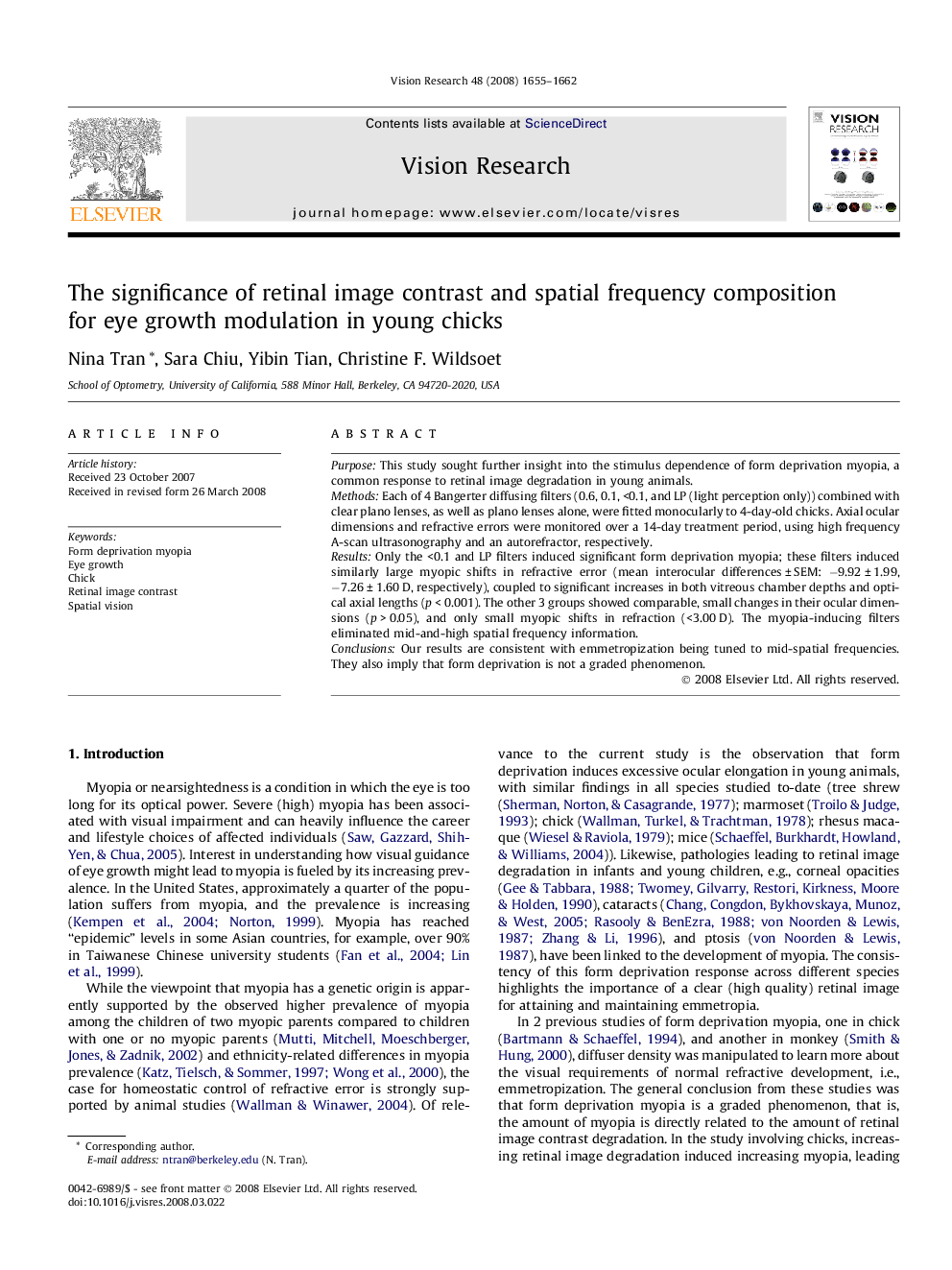| کد مقاله | کد نشریه | سال انتشار | مقاله انگلیسی | نسخه تمام متن |
|---|---|---|---|---|
| 4035036 | 1263500 | 2008 | 8 صفحه PDF | دانلود رایگان |

Purpose: This study sought further insight into the stimulus dependence of form deprivation myopia, a common response to retinal image degradation in young animals.Methods: Each of 4 Bangerter diffusing filters (0.6, 0.1, <0.1, and LP (light perception only)) combined with clear plano lenses, as well as plano lenses alone, were fitted monocularly to 4-day-old chicks. Axial ocular dimensions and refractive errors were monitored over a 14-day treatment period, using high frequency A-scan ultrasonography and an autorefractor, respectively.Results: Only the <0.1 and LP filters induced significant form deprivation myopia; these filters induced similarly large myopic shifts in refractive error (mean interocular differences ± SEM: −9.92 ± 1.99, −7.26 ± 1.60 D, respectively), coupled to significant increases in both vitreous chamber depths and optical axial lengths (p < 0.001). The other 3 groups showed comparable, small changes in their ocular dimensions (p > 0.05), and only small myopic shifts in refraction (<3.00 D). The myopia-inducing filters eliminated mid-and-high spatial frequency information.Conclusions: Our results are consistent with emmetropization being tuned to mid-spatial frequencies. They also imply that form deprivation is not a graded phenomenon.
Journal: Vision Research - Volume 48, Issue 15, July 2008, Pages 1655–1662